At this very moment, I’m sitting at a hightop table at a coffee shop. The exposed brick wall is lined with black and white photos of coffee beans and inspirational quotes that say things like “In a world where you can be anything, be kind.” I’m halfway through my iced coffee, and I’ve been eyeing the pastry case full of muffins and cheesecake for the past two hours. Jazz music is playing quietly in the background as I type away on my MacBook using the cafe’s free wifi.
It sounds familiar right? I could be in New York or Seoul or Buenos Aires and have this same experience. At this particular moment, I’m in Vientiane, Laos. My love affair with coffee shops goes way back, but sitting in a coffee shop is my favorite way to feel at home, when I’m away from home. Coffee shops have this sameness around the world that I find immensely comforting.
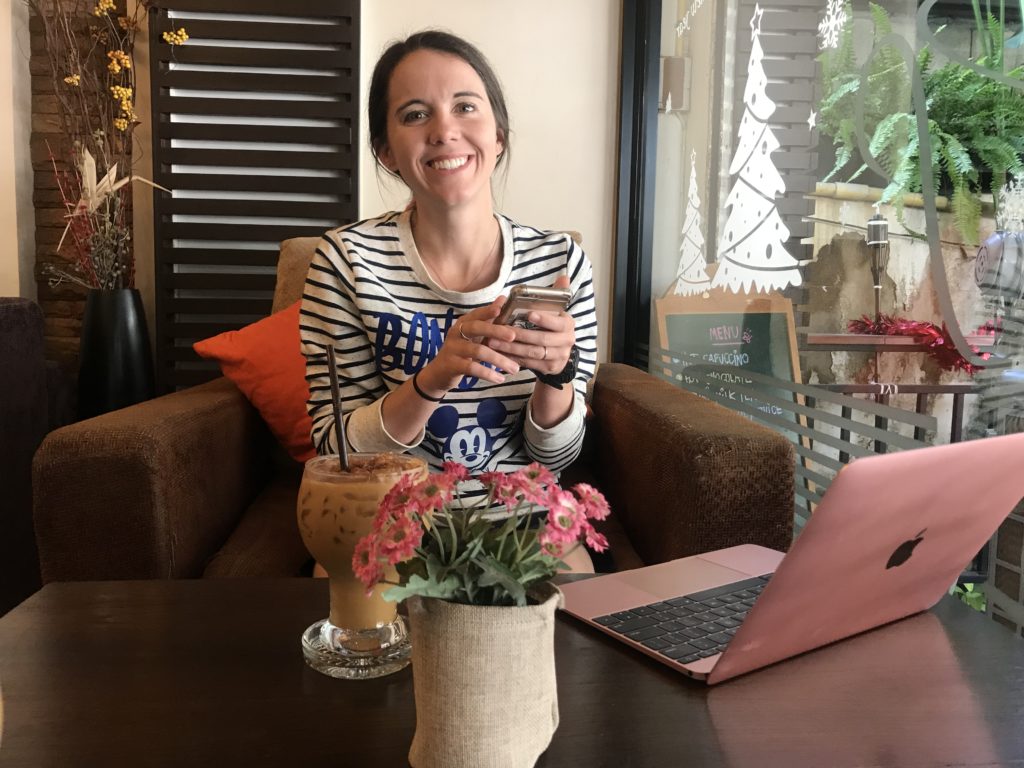
While the coffee shop experience stays the same, the coffee drinks, customs and norms around the world are just a little bit different. Same same, but different. Let’s explore some of the differences we’ve seen as we order coffee around the world.
Coffee Around the World
Asia
- Everything comes with condensed milk. If you order an iced coffee, it’s coming with condensed milk by default. Black? What’s that?
- Iced drinks, like lattes or cappuccinos, come with steamed milk foam on top of the cold drink.

- The iced version of a coffee beverage is often a little more expensive than the hot version. This is probably related to sometimes not being able to drink the tap water, making ice more of a luxury.
- When you order a Vietnamese iced coffee, there’s a good chance they’ll bring it to you hot in a special drip brewing device over a cup of (you guessed it) condensed milk, and then come back 15 minutes later with a cup of ice.

- Coffee portions in China (or at least in Shanghai) are itty bitty, usually only a single shot.
- In Thailand, a lot of cafes will have a drink on the menu named after the cafe. This is almost always a Thai Iced Coffee (espresso and condensed milk over ice, sometimes with cardamon).
- Also in Thailand, a really popular drink is Thai Iced Tea Coffee. Thai Iced Tea is made with brewed Ceylon tea and condensed milk (obviously) and is orange in color. They’ll throw a few shots of espresso in there and it’s a milky sweet caffeinated treat!
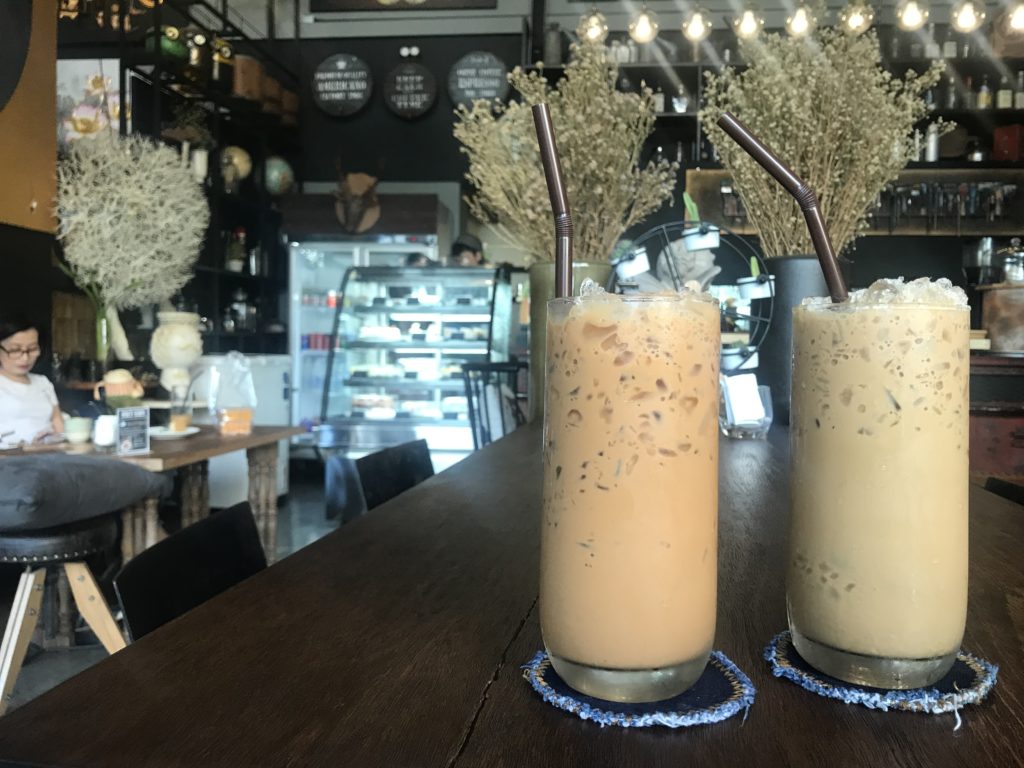
- They’re all about instant coffee in Asia, specifically Nescafe, and even more specifically, Nescafe 3-in-1 (a packet with instant coffee, sugar, and dried milk that when added to hot water turns into a sweet latte type thing). If you order an iced coffee from a street vendor, it’s most likely going to be instant coffee and it’s absolutely going to come with condensed milk in it.
In Seoul Specifically (the best coffee city if you ask us) …
- Seoul has some of the best coffee shops we’ve ever been to, and the best ones won’t show up on Google maps. You’ll pass the most amazing coffee shops all around the city when you’re not even trying.
- The coffee shops have the most over-the-top themes, ranging from Line Friends to goats to selfies and even poop! There’s a themed coffee shop for everyone in Seoul!
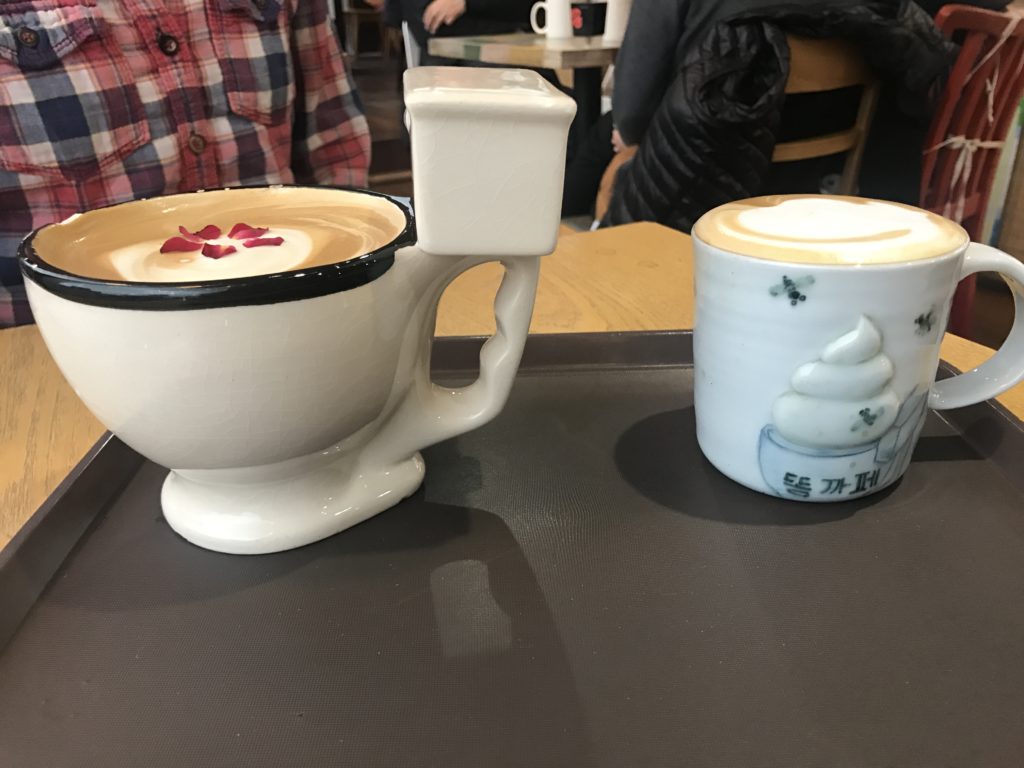
- Sweet potato lattes are a thing, which is cool, but they don’t have coffee in them (despite the “latte” name), which is not cool.
Europe
- In cafes in Vienna, you consume time and space but only pay for the coffee. This sounds fluffy, but it’s actually quite true. You pay for a place to sit and read and be, and the coffee is just what they charge you for.
- Coffee culture starts in the afternoon in Europe (and South America, really). People tend to drink coffee in the afternoon, not the morning. (Except for Italy, they only drink coffee before noon there.)
- It’s a little harder to find craft coffee shops in some of Europe. We found a lot more more cafes which were more like restaurants that also served coffee. Sitting and working for long periods of time felt in cafes felt the most unwelcome in Europe (with the notable exception of the Shoreditch neighbor in London).
- Cappuccino Freddo is a staple in Greece and we were ALL about it. It’s made with espresso and cold foam and is widely available throughout Greece.
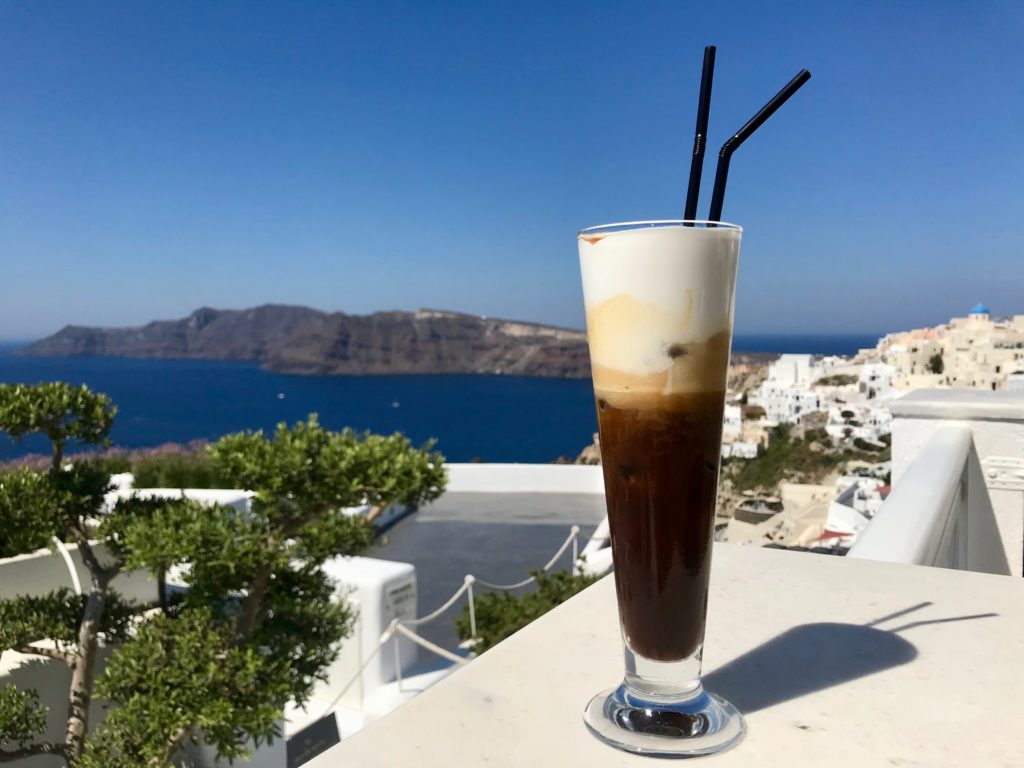
South America
- You can get sugar for your coffee for free, but you’re going to have to pay extra for milk. You will not find a condiment bar with DIY milk or cream in South America (not even at Starbucks).
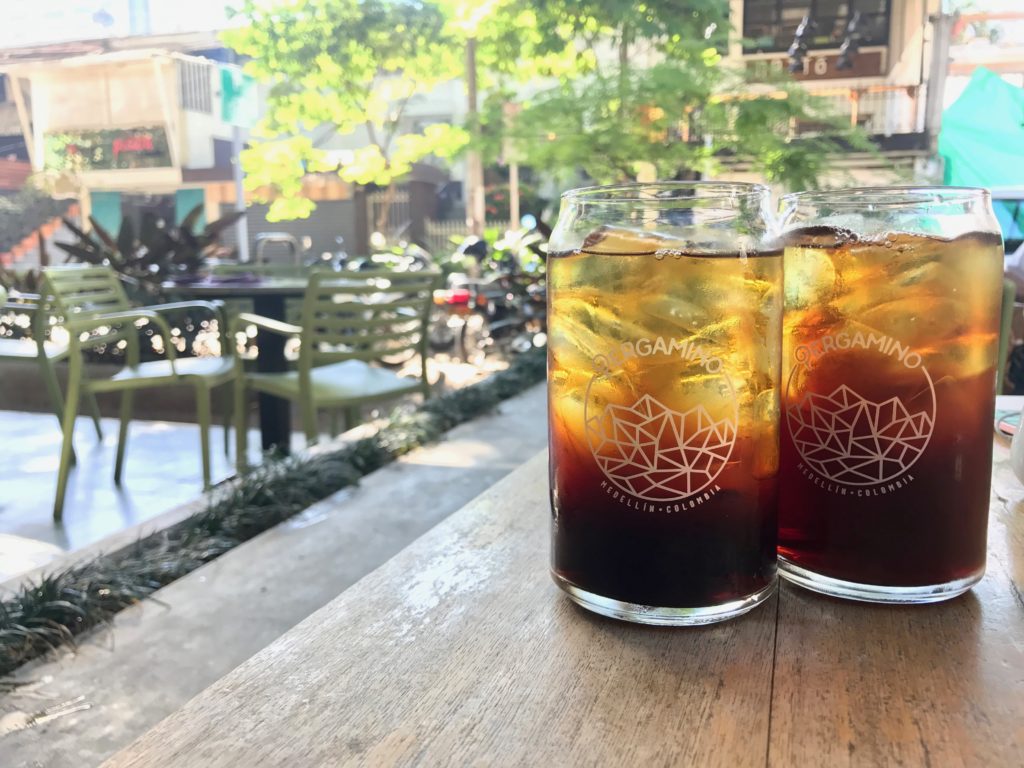
- Speaking of milk in your coffee, it usually comes steamed (even if your coffee is iced!)
- Actually, putting milk in your coffee at all is just much less a thing in South America. Unless you’re in Buenos Aires, where coffee con leche (y tres medialunes) is the staple. And by “con leche” (with milk) they really mean “mas leche” (lots of milk) because this drink is at least half steamed milk.

- Iced coffee is not as common in South America. You’re not likely to find cold brew on the menu, and while you can order an Iced Americano at Starbucks, plenty of other places will look at you funny.
- It’s rare to see coffee to go in South America. It’s usually only gringos who are walking around town with their giant cups of coffee in the morning. (Guilty!)
- Even though Colombia is world renowned for their coffee, they don’t have a very strong coffee culture. Most of the good stuff is exported, and the locals actually tend to drink pretty crappy coffee. You can find good coffee, but don’t expect it to be ubiquitous.
- Coffee with fresh lemonade or other citrus juices is totally a thing in Colombia and it is magical.
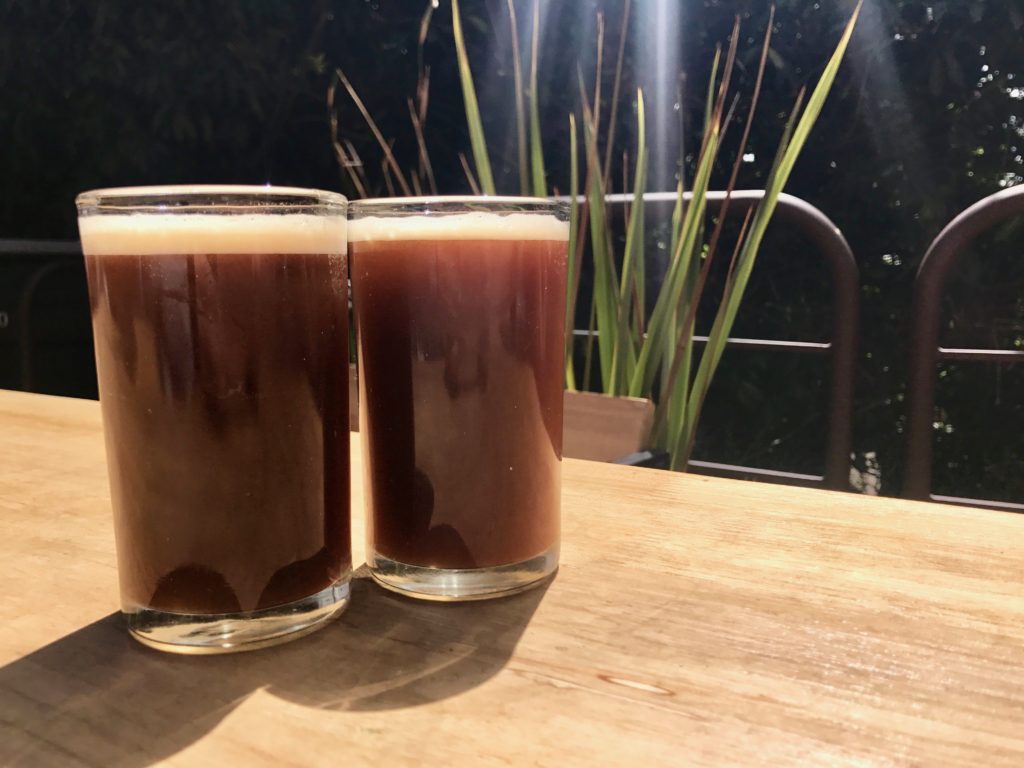
Middle East & North Africa
- Arabic Coffee is most common and is often the only type of coffee you’ll find outside of craft coffee shops. Arabic coffee is made using an unfiltered brewing method that involves boiling coffee and letting the grounds settle to the bottom.
- Out of all our travels, craft coffee shops were hardest to find in Morocco. The medina’s main coffee source was Arabic coffee from one of the many small cafes or street vendors.
- In addition to coffee, Mint Lemon was a common beverage which could be found in coffee shops and cafes around the Middle East and North Africa. It’s a deliciously refreshing drink made of fresh mint and lemon juice. It’s sometimes served blended with ice.
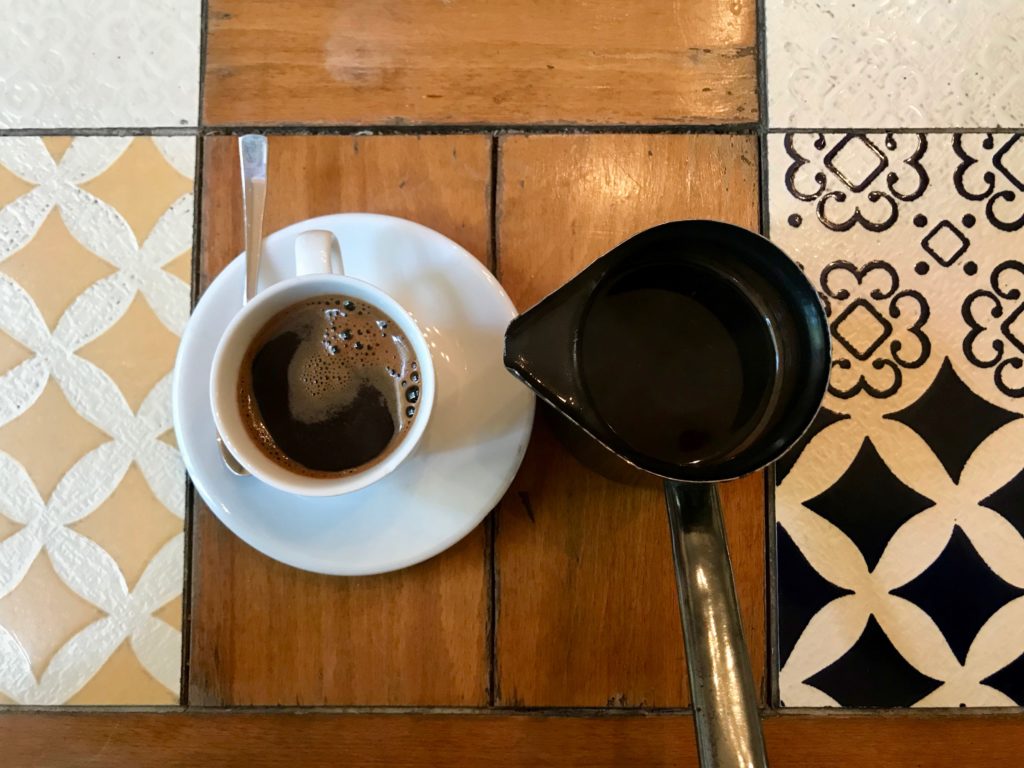
Everywhere
- Drip coffee is not really a thing. If you order a coffee, it pretty universally means americano.
- Latte art is everywhere, it’s beautiful everywhere, and I take pictures of it every single time.

- There’s no consistency around iced coffee. It sometimes means actual iced coffee (coffee that’s been brewed hot, and then chilled), sometimes it means cold brew, sometimes it means iced americano and sometimes it means something totally different like an iced latte or it will come with milk or flavors.
- Standard espresso drinks are universal around the world. No matter where you go, you can find espresso, latte, cappuccino, americano and usually flat white. Everyone always uses those exact words and it very consistently results in the exact same beverage.

- Flat white, which only came to Starbucks in the past few years, is a super popular drink everywhere else around the world.
- Coffee shops open weirdly late everywhere outside the US. Like, sometimes not until 9 or 10 in parts of South America and Asia. (I’m just saying, I wish I’d worked at a Starbucks in Medellin where I didn’t have to get to work at 3:30 AM.)
- You will pay a premium for the coffee shop “experience”, most notably in South America and Asia. The coffee shop prices are the same as they would be in the US, but you can find coffee for fractions of that price (as much as 75% cheaper) from street vendors or in local restaurants.

And that’s a wrap! How did I do? What differences in coffee have you noticed around the world? What should I keep my eye out for in countries or continents not mentioned above?


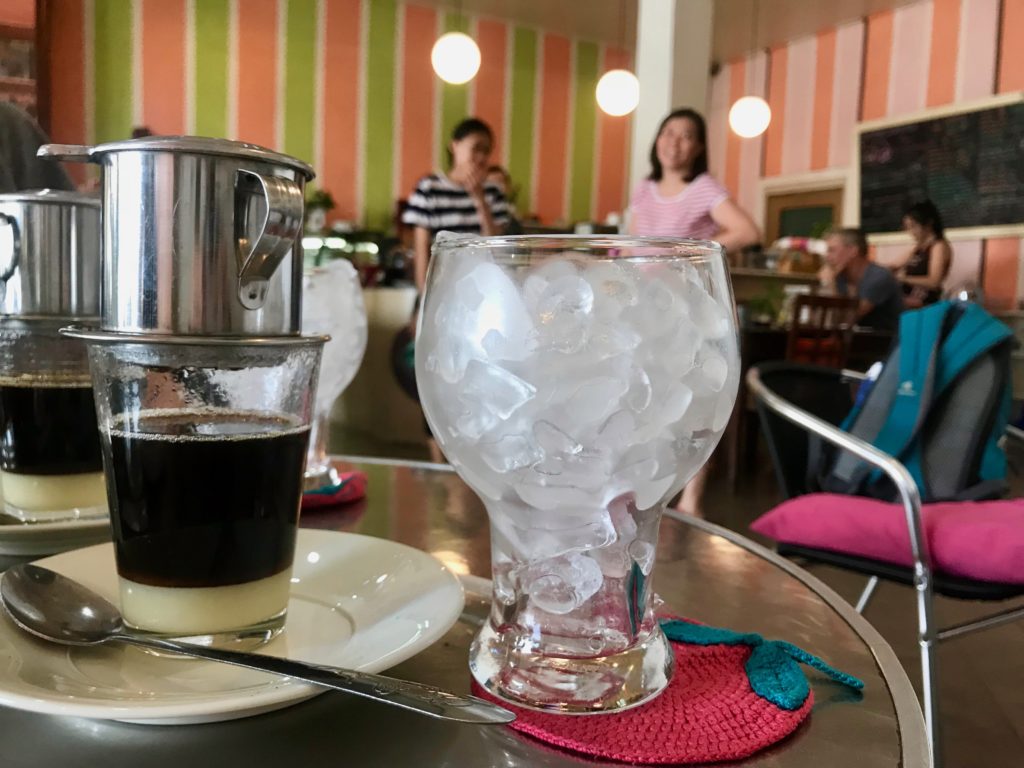

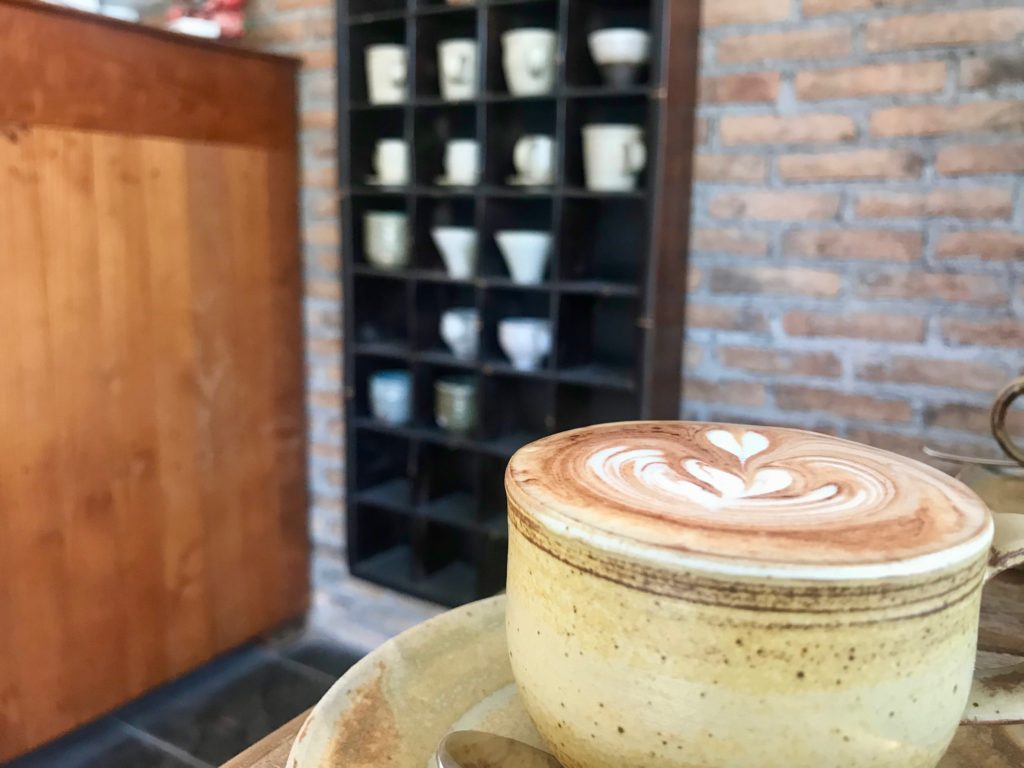
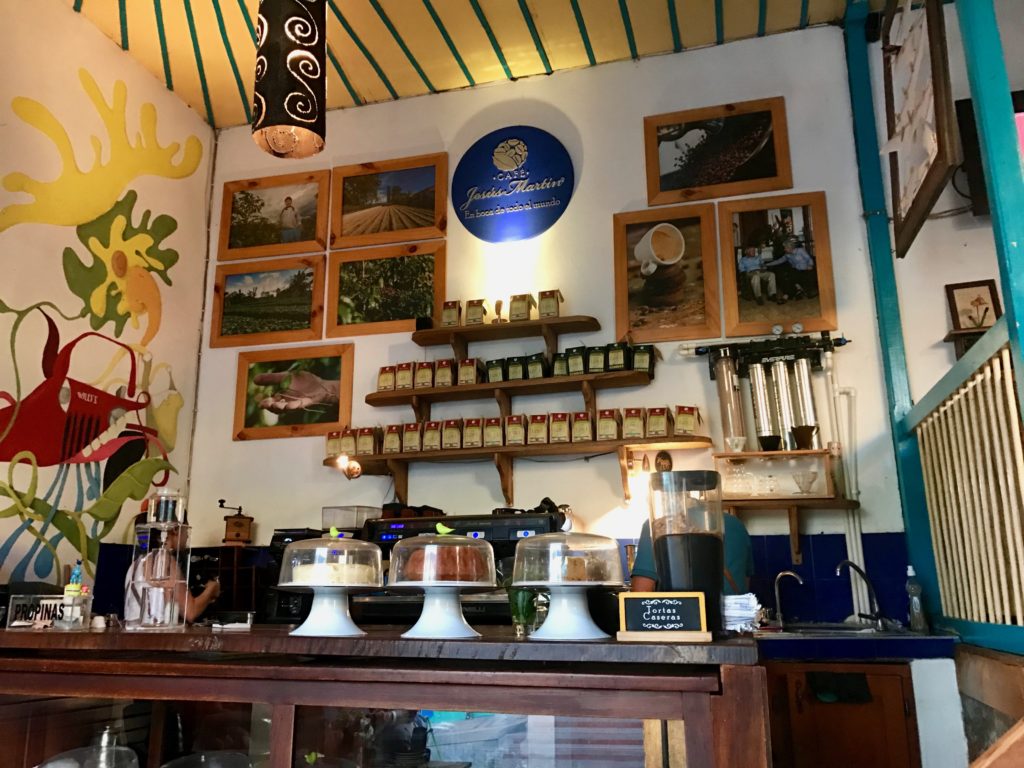
Michell
Saturday 16th of March 2019
Wonderful blog. I’m a follower. Love your article about the coffee and it’s amazing you’ve been to a lot of countries, you can practically compare coffee from country to country.
Emily
Tuesday 19th of March 2019
Thank you so much, Michell! I'm glad you enjoyed it! It's been SO much fun to see how coffee and coffee culture varies (and stays the same) from country to country. A beautiful and delicious journey it has been!